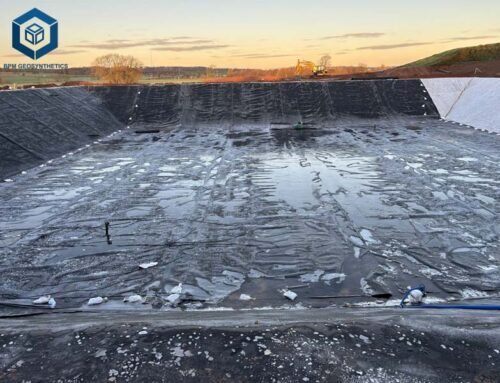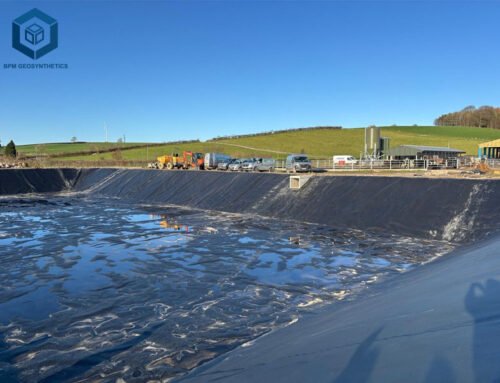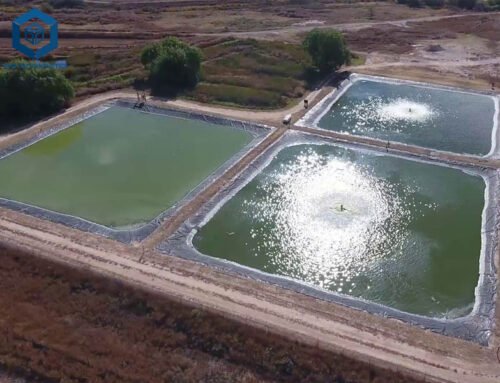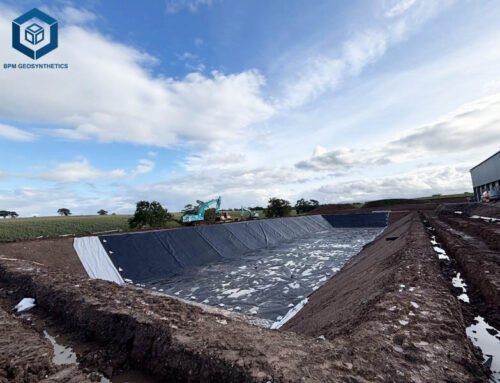Pond liner welding machine, also known as geomembrane welding machine, is essential tools for creating durable, watertight seams in geomembrane liners used in applications like aquaculture, landfills, and water reservoirs. As the global geomembrane market grows, valued at USD 2.3 billion in 2024 with a projected CAGR of 5.4% through 2030, demand for reliable welding machines is rising. However, one of the most common questions for project managers, contractors, and engineers is: How much does a pond liner welding machine cost? Prices vary widely based on type, features, brand, and application, ranging from $500 for basic models to over $10,000 for advanced, automated systems.
This guide provides a comprehensive breakdown of pricing factors, specifications, features, and cost-saving strategies to help you make an informed investment. Whether you’re outfitting a small fish farm or a large landfill project, this article offers valuable insights to optimize your budget and ensure quality.
1. Understanding Pond Liner Welding Machines
What Is a Pond Liner Welding Machine?
A pond liner welding machine is a specialized device designed to fuse geomembrane sheets, such as High-Density Polyethylene (HDPE), Polyvinyl Chloride (PVC), or Ethylene Propylene Diene Monomer (EPDM), into seamless, leak-proof barriers. These machines use heat and pressure to create strong molecular bonds, achieving seam strengths up to 95% of the base material, per ASTM D6392 standards. They are critical for applications requiring impermeability, such as fish ponds, wastewater lagoons, and mining containment systems. Leading manufacturers like BPM Geosynthetics and Leister offer models tailored for diverse project scales, from portable units for small ponds to automated systems for industrial installations.
Types of Pond Liner Welding Machines
Pond liner welding machines come in three primary types, each suited to specific materials and project requirements:
- Hot Wedge Welders: These use a heated metal wedge (300–450°C) to melt overlapping sheets, followed by pressure rollers to form a dual-track seam. Ideal for HDPE and thicker liners (0.5–3.0 mm), they offer high speed (0.5–6 m/min) and are preferred for large-scale projects like landfills.
- Hot Air Welders: These blow hot air (up to 600°C) to soften the material before roller compression. Lightweight and versatile, they’re suitable for thinner liners (0.2–1.5 mm) and materials like PVC, commonly used in aquaculture.
- Extrusion Welders: These extrude molten plastic onto seams, ideal for repairs, T-joints, or complex geometries. They work well with HDPE (1.0–3.0 mm) and are slower (0.2–2.0 m/min) but precise for detailed work.
Each type influences price, with hot wedge welders typically costing more due to their efficiency and robustness.
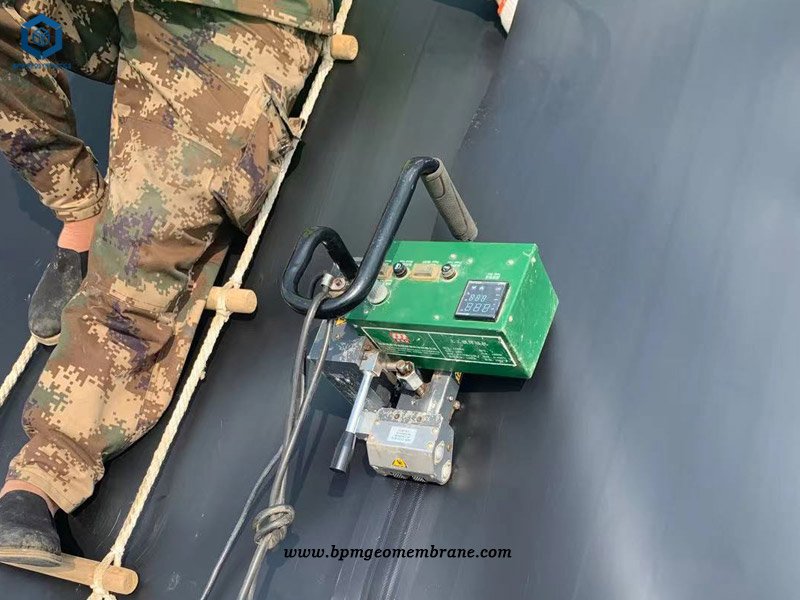

2. Factors Influencing Pond Liner Welding Machine Price
The cost of a pond liner welding machine depends on multiple factors, from technical specifications to market dynamics. Understanding these variables helps you align your purchase with project needs and budget constraints.
Machine Type and Welding Technology
The welding method significantly impacts price:
- Hot Wedge Welders: $1,500–$8,000. Their high-speed, dual-track seams make them pricier but ideal for large projects. Models like BPM’s BPM800 cost around $2,000 for basic units, while automated versions like Leister’s Comet reach $6,000+.
- Hot Air Welders: $500–$3,000. Lightweight and affordable, they’re suited for smaller projects. Basic models like BPM’s BPM1600s start at $700, while advanced units with digital controls cost $2,500.
- Extrusion Welders: $1,000–$5,000. These are mid-range, with manual models like BPM’s BPM600 at $1,500 and high-output units at $4,000+.
Hot wedge welders dominate 60% of the market due to their versatility, per DataIntelo (2024).
Material Compatibility and Thickness Range
Machines designed for thicker liners (up to 3.0 mm) or multiple materials (HDPE, PVC, LDPE, EVA) are more expensive. For example:
- Single-Material Welders: $500–$2,000, suited for PVC or thin HDPE (0.2–1.5 mm) in aquaculture.
- Multi-Material Welders: $2,000–$10,000, capable of handling HDPE (0.5–3.0 mm) for landfills or mining.
A machine welding 2.0 mm HDPE for a landfill may cost 30% more than one for 0.5 mm PVC in a fish pond.
Power and Performance Specifications
Higher power and advanced features increase costs:
- Power Output: Ranges from 800W (hot air, $500–$1,500) to 3400W (extrusion, $3,000–$5,000). High-power models like BPM’s BPM600 (3400W) cost $2,500+.
- Welding Speed: 0.5–6 m/min for hot wedge ($1,500–$8,000) vs. 0.2–2.0 m/min for extrusion ($1,000–$5,000). Faster speeds raise prices by 20–30%.
- Temperature Range: 0–600°C for versatile models ($2,000+) vs. 0–450°C for basic units ($500–$1,500).
- Pressure Control: Adjustable pressure (100–1000 N) adds $500–$1,000 to costs.
Automation and Digital Features
Modern welders with automation and digital controls are pricier but reduce labor costs by 25%:
- Manual Welders: $500–$2,000, requiring skilled operators, suitable for small projects.
- Semi-Automated Welders: $2,000–$5,000, with digital displays for temperature and speed.
- Fully Automated Welders: $5,000–$10,000+, with seam tracking and real-time monitoring, ideal for large-scale projects.
Automated models like Miller Weldmaster’s systems, starting at $6,000, boost efficiency by 15%.
Brand and Manufacturer Reputation
Reputable brands command premium prices due to quality and support:
- BPM Geosynthetics: $700–$4,000, known for durability and global supply (36+ countries).
- Leister: $2,000–$8,000, offering Swiss precision and advanced automation.
- Miller Weldmaster: $3,000–$10,000, specializing in high-frequency and automated welders.
- Generic Brands: $500–$1,500, often less reliable but budget-friendly.
BPM’s BPM800, priced at $2,000, balances cost and performance for mid-sized projects.
Portability and Weight
Portable welders (5–15 kg) cost less than stationary units (50–150 kg):
- Portable Models: $500–$3,000, like BPM’s 5.5 kg BPM800 ($2,000), ideal for remote fish farms.
- Stationary Models: $5,000–$10,000, suited for industrial sites with stable power.
Portability demand grew by 10% in 2024 for remote applications, per Technavio.
Certifications and Compliance
Machines meeting standards like CE, ISO 9001, or ASTM D6392 cost 10–20% more due to rigorous testing:
- Certified Models: $1,500–$8,000, ensuring reliability for regulated projects like landfills.
- Non-Certified Models: $500–$2,000, riskier for critical applications.
Certified welders reduce seam failure by 70%, per Geosynthetics Magazine (2024).
Market and Regional Variations
Prices vary by region due to shipping, taxes, and demand:
- North America/Europe: $1,500–$10,000, with high labor costs driving automation.
- Asia-Pacific: $500–$5,000, led by China’s low-cost manufacturing (45% market share).
- Africa/Middle East: $1,000–$6,000, with import duties adding 5–15%.
Bulk orders from platforms like Alibaba can save 10–20%.
3. Price Ranges for Pond Liner Welding Machines
Based on type, features, and brand, here are typical price ranges:
- Entry-Level Models: $500–$1,500. Basic hot air welders (800W, 0.2–1.5 mm) for small ponds or repairs. Example: BPM1600s ($700).
- Mid-Range Models: $1,500–$4,000. Hot wedge or extrusion welders (800–3400W, 0.5–2.0 mm) for mid-sized projects. Example: BPM800 ($2,000).
- High-End Models: $4,000–$10,000+. Automated hot wedge welders (0.5–3.0 mm, digital controls) for industrial applications. Example: Leister Comet ($6,000).
The table below summarizes pricing by type and application:
|
Machine Type |
Price Range | Applications | Key Features |
| Hot Wedge | $1,500–$8,000 | Landfills, Reservoirs | 0.5–6 m/min, 0.5–3.0 mm, Dual-track |
| Hot Air | $500–$3,000 | Aquaculture, Tunnels | 1.0–6 m/min, 0.2–1.5 mm, Lightweight |
| Extrusion | $1,000–$5,000 | Repairs, T-Joints |
0.2–2.0 m/min, 1.0–3.0 mm, Precision |
4. Technical Specifications and Their Impact on Price
Specifications determine performance and cost. Below are key parameters and their influence:
Power Supply and Voltage
- Range: 110V/220V, 50/60 Hz.
- Impact: Dual-voltage models (110V/220V) cost $200–$500 more for global compatibility. Example: BPM800 (220V, $2,000) vs. Leister Twinny (dual-voltage, $2,500).
Welding Speed
- Range: 0.5–6 m/min (hot wedge), 1.0–6 m/min (hot air), 0.2–2.0 m/min (extrusion).
- Impact: Faster speeds (5–6 m/min) increase costs by 20%. Example: BPM900 (5 m/min, $2,500) vs. generic hot air (2 m/min, $700).
Material Thickness
- Range: 0.2–3.0 mm.
- Impact: Machines handling thicker liners (2.0–3.0 mm) cost 30% more. Example: BPM600 (1.0–3.0 mm, $2,500) vs. BPM1600s (0.2–1.5 mm, $700).
Temperature Control
- Range: 0–450°C (hot wedge/extrusion), 20–600°C (hot air).
- Impact: Wider ranges add $300–$700 for versatility. Digital thermostats increase costs by $200.
Weld Width and Pressure
- Weld Width: 10–50 mm (dual-track for hot wedge).
- Pressure: 100–1000 N.
- Impact: Wider welds (30–50 mm) and adjustable pressure add $500–$1,000. Example: BPM800 (25 mm, $2,000) vs. Leister (50 mm, $3,500).
Weight and Dimensions
- Weight: 1.2–15 kg (portable), 50–150 kg (stationary).
- Dimensions: 50×37×25 cm (portable).
- Impact: Lightweight models (5 kg) cost $500–$2,000 less than stationary units.
5. Applications and Their Influence on Machine Choice and Cost
Pond liner welding machines serve diverse industries for geomembrane welding, each with unique demands that affect pricing:
Aquaculture Ponds
- Requirement: 0.5–1.0 mm HDPE geomembrane or PVC liner, lightweight welders.
- Price Range: $500–$2,000 (hot air or basic hot wedge).
- Example: BPM1600s ($700) welded 300,000 m² of 0.6 mm HDPE in a Sri Lankan shrimp farm, boosting yield by 15%.
Landfill Liners
- Requirement: 1.5–2.0 mm HDPE, high-speed hot wedge welders.
- Price Range: $2,000–$8,000.
- Example: BPM900 ($2,500) sealed 100,000 m² in a Saudi landfill, achieving zero leaks.
Wastewater Treatment
- Requirement: 1.0–2.0 mm HDPE, durable welders.
- Price Range: $1,500–$5,000.
- Example: BPM800 ($2,000) ensured 100% seam integrity in a 50,000 m² Sri Lankan lagoon.
Mining Operations
- Requirement: 1.5–3.0 mm textured HDPE, extrusion welders for repairs.
- Price Range: $2,000–$6,000.
- Example: BPM600 ($2,500) reduced environmental risks by 90% in a South African tailings pond.
Water Reservoirs
- Requirement: 1.0–2.0 mm HDPE, mid-range welders.
- Price Range: $1,500–$4,000.
- Example: BPM900 ($2,500) saved 1.2 million gallons/hectare in an Indian reservoir.
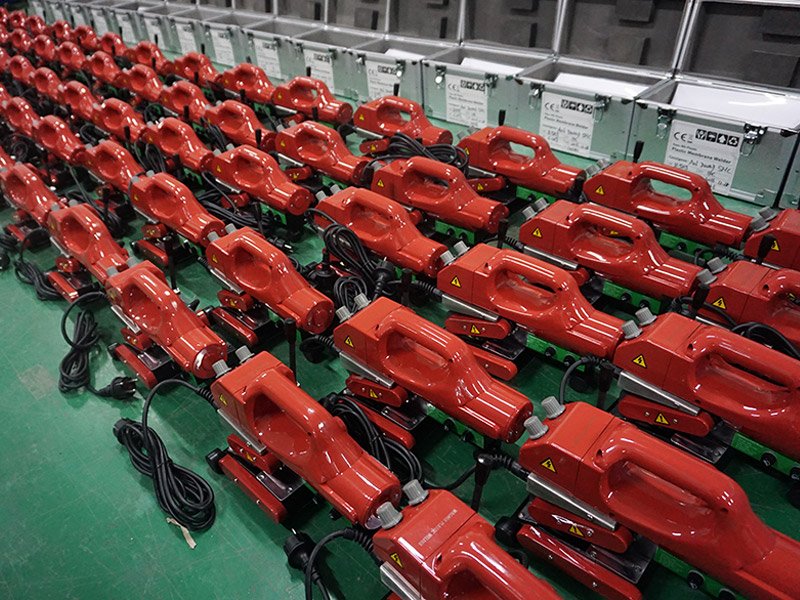

6. Cost-Saving Strategies for Purchasing Pond Liner Welding Machines
Maximizing value requires strategic planning. Here are proven ways to reduce costs without compromising quality:
Buy in Bulk
Ordering multiple units can save 10–15%. For example, purchasing five BPM800 welders ($2,000 each) may reduce the unit price to $1,700, saving $1,500 total.
Source Locally
Local suppliers cut shipping costs by 5–10%. In Asia-Pacific, BPM’s China-based distribution offers machines at $500–$3,000, avoiding high import duties.
Choose Refurbished Models
Certified refurbished welders from Leister or Miller Weldmaster cost 20–30% less ($1,200–$5,000) and maintain 90% performance.
Invest in Training
Operator training reduces errors by 12%, saving $0.3/m² on large projects. BPM offers free video consultations, cutting training costs.
Opt for Energy-Efficient Models
Low-power welders (800W) save $100/year in electricity vs. high-power (3400W) units. Shandong Greenland’s 700 model ($1,500) uses electric heating for eco-friendly operation.
Compare Online Platforms
Alibaba and Made-in-China list verified suppliers like BPM, with prices 10–20% lower than retail. A BPM800 on Alibaba costs $1,800 vs. $2,000 direct.
7. Additional Costs to Consider
Beyond the machine’s base price, factor in these expenses:
Accessories and Consumables
- Welding Rods: $50–$200/year for extrusion welders.
- Nozzles/Rollers: $20–$100, replaced every 6–12 months.
- Testing Kits: $100–$500 for peel/shear test equipment.
Maintenance and Repairs
- Annual Maintenance: $100–$300, extending machine life by 20%.
- Repairs: $200–$1,000 for motor or heating element issues.
Shipping and Taxes
- Shipping: $50–$500, depending on region and weight.
- Import Duties: 5–15% in Africa/Middle East, adding $75–$750 for a $5,000 machine.
Operator Training
- In-Person Training: $500–$2,000 per session.
- Online Training: $100–$500, offered by BPM or Leister.
8. Industry Trends Impacting Pond Liner Welding Machine Prices
The welding machine market is evolving, influencing costs and features:
Automation and Digitalization
Automated welders with seam tracking, used in 30% of new models, cost $5,000–$10,000 but improve efficiency by 15%. Miller Weldmaster’s automated systems are priced at $6,000+.
Sustainability
Energy-efficient welders, reducing emissions by 8%, cost $1,500–$4,000. Shandong Greenland’s electric models are gaining traction in eco-conscious markets.
Portability
Lightweight welders (<10 kg) grew 10% in demand, priced at $500–$3,000. BPM’s 7.5 kg BPM600 ($1,500) suits remote aquaculture sites.
Regulatory Compliance
Stricter EPA and IGS standards increase certified welder prices by 10%. BPM’s CE-compliant models cost $1,500–$4,000.
Market Growth
The Asia-Pacific region, with a 45% market share, offers lower prices ($500–$5,000) due to local manufacturing. Global market growth at 6% CAGR through 2033 keeps prices competitive.
9. How to Choose the Right Pond Liner Welding Machine
Selecting the optimal machine involves:
- Assess Project Needs: Choose hot wedge for landfills (1.5–3.0 mm HDPE), hot air for aquaculture (0.5–1.0 mm PVC).
- Evaluate Site Conditions: Portable welders for remote sites, stationary for industrial setups.
- Check Certifications: Ensure CE, ISO 9001, or ASTM compliance for regulated projects.
- Compare Features: Prioritize digital controls, adjustable speed, and wide temperature ranges.
- Set a Budget: Balance cost with performance; mid-range models ($1,500–$4,000) suit most projects.
Pro Tip: Request trial welds to verify seam strength per ASTM D6392.
10. Final Thoughts
Pond liner welding machine prices range from $500 for basic hot air welders to $10,000+ for automated hot wedge systems, driven by type, features, brand, and application. Entry-level models suit small aquaculture projects, while high-end welders ensure reliability for landfills and mining. By understanding factors like welding technology, material compatibility, and automation, you can select a machine that meets your needs and budget. Cost-saving strategies—bulk purchases, local sourcing, and training—can save 10–30%, while trends like automation and sustainability shape future pricing.
For quality and support, source from trusted suppliers like BPM Geomembrane. Invest wisely to achieve 99% seam reliability and long-term project success.


